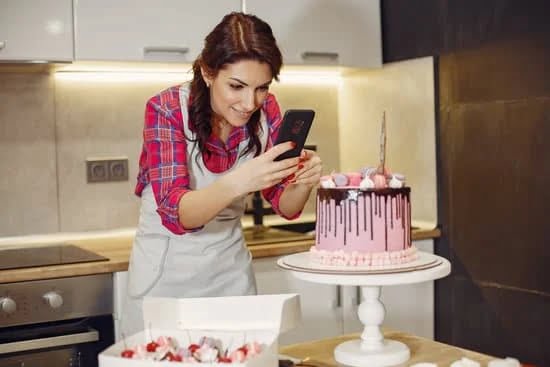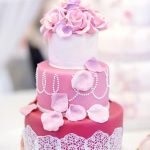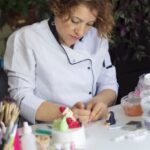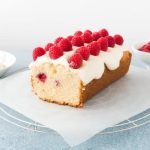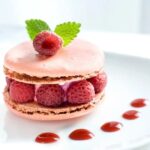Are you interested in learning how to decorate cakes? Whether you’re a beginner or looking to improve your skills, understanding the basics of cake decorating is essential. From essential tools and equipment to mastering piping techniques and creating intricate designs, there’s a lot to learn in the world of cake decoration.
Cake decorating is not only about making a cake look beautiful, but also about expressing creativity and turning ordinary desserts into works of art. In this article, we will explore the fundamentals of cake decorating, including types of frosting, piping techniques, fondant usage, color theory, and even 3D designs. By the end of this guide, you’ll have the knowledge and confidence to take your cake decorating skills to the next level.
Throughout this article, we’ll cover everything you need to know about mastering the art of cake decoration. Whether you’re an aspiring baker looking to start your own business or simply want to impress friends and family with beautifully decorated cakes, this guide will equip you with the necessary skills and knowledge to create stunning edible masterpieces. So let’s dive in and begin our journey into the world of cake decorating.
Essential Tools and Equipment for Cake Decorating
When it comes to learning how to decorate cakes, having the right tools and equipment is essential for success. Whether you’re a beginner or an experienced baker looking to enhance your skills, having the right tools can make all the difference in the outcome of your cake decorating. Some essential tools and equipment for cake decorating include piping bags and tips, offset spatulas, turntables, cake decorating combs, and fondant smoothers.
Piping bags and tips are crucial for creating intricate designs and patterns on cakes. From simple borders to detailed flowers and lettering, the right piping tips can make all the difference in achieving professional-looking decorations. Offset spatulas are another must-have tool for smoothing frosting and applying it evenly to cakes. A turntable is essential for easily rotating cakes while decorating, allowing for smooth and consistent designs.
Cake decorating combs are used to create textured designs on the sides of cakes, adding visual interest and professional-looking finishing touches. Fondant smoothers are vital for working with fondant, allowing for a smooth and polished finish on cakes covered with this versatile icing. Investing in high-quality tools and equipment can truly elevate your cake decorating skills.
Types of Frosting and Icing for Different Cake Decorating Techniques
When it comes to cake decorating, choosing the right frosting and icing is crucial for achieving the desired look and taste of your creation. Different types of frosting and icing can be used for various cake decorating techniques, each offering unique benefits and challenges. In this section, we will explore the different types of frosting and icing commonly used in cake decorating and how they can be best utilized for various techniques.
Buttercream Frosting
One of the most versatile frostings, buttercream is a staple in cake decorating. It is smooth, creamy, and easy to work with, making it perfect for piping borders, creating flowers, and adding textured designs. Buttercream can also be easily tinted with food coloring to achieve vibrant colors, making it ideal for creating intricate designs on cakes.
Royal Icing
Royal icing is a hard-drying icing that is often used for intricate designs such as lacework, delicate flowers, and piped embellishments. Its ability to harden quickly makes it perfect for creating 3D decorations that hold their shape. Royal icing is made from egg whites or meringue powder mixed with powdered sugar, giving it a smooth consistency that can be piped into fine details.
Fondant
Fondant is a popular choice for covering cakes due to its smooth finish and ability to create beautifully sculpted designs. It can also be rolled out and molded into 3D shapes or layered to create decorative elements on cakes. While fondant may not have the same flavor as buttercream or royal icing, its versatility in creating clean lines and elaborate decorations makes it a go-to choice for professional cake decorators.
Learning how to work with different types of frosting and icing is essential in mastering the art of cake decorating. Each type offers its own set of advantages and challenges, so experimenting with different techniques will help you develop a well-rounded skillset in creating stunning cakes.
Step-by-Step Guide to Mastering Piping Techniques
Piping techniques are essential for any cake decorator, as they allow you to create intricate designs and patterns on your cakes. Whether you are a beginner or looking to improve your skills, mastering piping techniques is an important step in learning how to decorate cakes.
To start learning how to decorate cakes using piping techniques, it’s important to familiarize yourself with the basic tools needed. This includes pastry bags, piping tips of various shapes and sizes, couplers to easily change tips, and a sturdy surface to practice on. These tools will be your best friends as you learn and perfect your piping skills.
Once you have the necessary tools, it’s time to practice the different types of piping techniques such as shell borders, rosettes, and writing. It’s crucial to start with simple designs before moving on to more complex ones. Practice makes perfect in mastering piping techniques, so don’t get discouraged if your first attempts don’t turn out the way you want them to.
A helpful tip for mastering piping techniques is to watch video tutorials and take online classes that provide step-by-step guidance. Additionally, attending in-person cake decorating workshops can also greatly enhance your skills. With dedication and patience, you can definitely learn how to decorate cakes using various piping techniques effectively.
| Piping Techniques | Importance |
|---|---|
| Shell borders | Create decorative edges |
| Rosettes | Make beautiful floral patterns |
| Writing | Add personalized messages on cakes |
Tips for Creating Intricate Designs and Patterns on Cakes
When it comes to cake decorating, creating intricate designs and patterns is a great way to take your skills to the next level. Whether you’re a beginner or an experienced decorator, mastering the art of intricate designs can elevate the look of your cakes and impress your friends and family. Here are some tips for creating intricate designs and patterns on cakes:
- Start with a plan: Before you begin decorating your cake, it’s important to have a clear idea of the design or pattern you want to create. Take some time to sketch out your design or create a mental picture of how you want the finished product to look.
- Use the right tools: To create intricate designs, you’ll need the right tools such as piping bags, tips, stencils, and cutters. Invest in quality tools that will help you achieve precise and detailed designs.
- Practice patience: Creating intricate designs takes time and patience. Take it slow and steady, especially when working with delicate details. Don’t rush the process – precision is key when it comes to intricate cake decorating.
By following these tips, you can enhance your cake decorating skills and create stunning cakes that are sure to impress. Remember that practice makes perfect, so don’t be discouraged if your first attempts at intricate designs aren’t flawless. With time and dedication, you can master the art of creating beautiful patterns and designs on your cakes.
In addition to these general tips for creating intricate designs on cakes, there are also specific techniques that you can learn to take your decorating skills even further. Some popular techniques include:
- Royal icing extension work
- Hand-painting with edible food colors
- Airbrushing techniques
These advanced techniques require practice and patience but can result in truly stunning and unique cake decorations that will set your creations apart from the rest. With dedication and a willingness to learn new skills, you can become proficient in creating intricate designs and patterns on cakes that will amaze everyone who sees them.
Learning How to Use Fondant for Cake Decorating
Fondant is a versatile and popular choice for cake decorating, as it allows you to create smooth and seamless finishes on your cakes. Whether you’re a beginner or an experienced baker, mastering the art of using fondant can take your cake decorating skills to the next level. Here’s a step-by-step guide on how to use fondant for cake decorating:
1. Prepare the Cake: Before applying the fondant, make sure your cake is properly baked, cooled, and iced with a layer of buttercream or ganache. This will provide a smooth surface for the fondant to adhere to.
2. Knead the Fondant: Start by kneading your fondant until it’s soft and pliable. You can add a small amount of vegetable shortening if the fondant becomes too dry or crumbly.
3. Roll Out the Fondant: Dust your work surface with powdered sugar or cornstarch, then use a rolling pin to roll out the fondant into a thin, even layer. Make sure it’s large enough to cover the entire cake.
4. Cover the Cake: Carefully lift the rolled-out fondant with your rolling pin and drape it over the cake. Gently smooth out any air bubbles or wrinkles with your hands, working from the top down to ensure a flawless finish.
5. Decorate: Once the fondant is applied, you can further decorate your cake by adding embellishments such as cut-out shapes, ruffles, or textures using special tools and techniques.
Learning how to use fondant for cake decorating may seem challenging at first, but with practice and patience, you’ll soon master this versatile technique and open up a world of creative possibilities for your cakes. Remember that experimentation is key when working with fondant, so don’t be afraid to try new designs and ideas.
Importance of Color Theory and How to Apply It to Cake Decorating
Color theory plays a crucial role in cake decorating, as it can significantly impact the overall look and appeal of your cakes. Understanding color theory and learning how to apply it to your cake decorating techniques can help you create visually appealing and harmonious designs that will impress your clients and guests.
The Basics of Color Theory
Before delving into the application of color theory in cake decorating, it’s important to grasp the basics of color theory. This includes understanding the color wheel, primary, secondary, and tertiary colors, as well as concepts such as hue, saturation, and value. Familiarizing yourself with these fundamental principles will provide a solid foundation for incorporating color theory in your cake decorating endeavors.
Applying Color Theory to Cake Decorating
Once you have a good understanding of the basic concepts of color theory, it’s time to apply this knowledge to your cake decorating projects. Start by experimenting with different color combinations and understanding how they interact with each other. Consider factors such as contrast, harmony, and balance when choosing colors for frosting, icing, and decorative elements on your cakes. Incorporating complementary or analogous colors can create eye-catching visual effects that elevate your cake designs.
Tips for Using Color Effectively
To use color effectively in cake decorating, consider the overall theme or concept of the cake you are creating. Whether it’s a vibrant and playful birthday cake or an elegant wedding cake, the chosen colors should reflect the mood and message you want to convey. Additionally, pay attention to the significance of cultural and symbolic associations attached to certain colors.
For example, red can signify love and passion while blue may evoke feelings of serenity and tranquility. By understanding these associations, you can make more informed decisions when selecting colors for your cake designs.
Learning how to apply color theory to cake decorating is an essential skill that can set your creations apart from others. By mastering this aspect of design, you’ll be able to create stunning cakes that not only taste delicious but also visually captivate anyone who sees them.
Mastering the Art of Cake Sculpting and 3D Designs
Cake sculpting and creating 3D designs are advanced techniques that can take your cake decorating skills to the next level. This artistic approach to cake decorating involves shaping and carving cakes into intricate designs, such as animals, objects, or even people. While it may seem daunting at first, with the right tools and techniques, you can master the art of cake sculpting and create stunning 3D designs that will wow your friends and family.
To begin learning how to sculpt cakes, it’s essential to start with the right foundation. Choose a dense and sturdy type of cake, such as pound cake or mud cake, which will hold its shape well when carved. Additionally, having a sharp serrated knife and a set of sculpting tools will be crucial for creating clean lines and intricate details in your cake sculptures.
When it comes to creating 3D designs on cakes, the key is to have a clear vision of the design you want to achieve. Start by sketching out your design on paper before transferring it onto the cake. Use templates or stencils to ensure accuracy when carving the cake, and don’t be afraid to experiment with different textures and shapes to bring your design to life.
Ultimately, mastering the art of cake sculpting and 3D designs requires patience, practice, and a willingness to learn from trial and error. With dedication and creativity, you can elevate your cake decorating skills by incorporating these advanced techniques into your repertoire. Keep practicing and experimenting with different designs to hone your skills in this unique form of cake decorating.
Taking Your Cake Decorating Skills to the Next Level
In conclusion, mastering the art of cake decorating requires dedication, practice, and a willingness to continually learn new techniques and tools. This article has provided a comprehensive guide on how to learn to decorate cakes, covering everything from understanding the basics of cake decorating to advanced techniques and resources.
By understanding the essential tools and equipment, types of frosting and icing, learning piping techniques, creating intricate designs, using fondant, incorporating color theory, mastering cake sculpting, and utilizing advanced techniques and resources, you can take your cake decorating skills to the next level.
To truly excel in cake decorating, it’s important to continually seek out opportunities for learning and growth. Whether it’s through workshops, online tutorials, or experimenting with new tools and techniques at home, actively seeking out ways to expand your knowledge will help you improve as a cake decorator.
Additionally, don’t be afraid to get creative and think outside the box when it comes to designing and decorating cakes. Experiment with different textures and patterns, explore unique color combinations, and push yourself out of your comfort zone.
In the end, becoming proficient in cake decorating is not just about following specific instructions or copying existing designs – it’s about developing your own unique style and artistic voice. So keep practicing, keep exploring new ideas and methods on how to learn to decorate cakes ,and above all else, have fun with it. With time and dedication, your skills will continue to evolve,giving you the confidence to tackle even the most complex cake decorating projects.
Frequently Asked Questions
Can I Teach Myself to Decorate Cakes?
Yes, it is absolutely possible to teach yourself how to decorate cakes. There are countless resources available online, including tutorials, videos, blogs, and forums where you can learn various techniques and tips.
Is Cake Decorating Hard to Learn?
Cake decorating can be challenging at first but with practice and patience, it becomes easier over time. It’s important to start with simple designs and gradually work your way up to more complex ones.
What Does a Beginner Need for Cake Decorating?
For beginners in cake decorating, some essential tools and supplies include a turntable for easy icing application, piping bags and tips for creating different designs, offset spatulas for smoothing icing, a leveler for even cake layers, and a good quality rolling pin for fondant work.
Additionally, investing in a few basic ingredients such as food coloring gels and edible decorations can help get you started on your cake decorating journey.

Welcome to our cake decorating blog! My name is Destiny Flores, and I am the proud owner of a cake decorating business named Cake Karma. Our mission is to provide delicious, beautiful cakes for all occasions. We specialize in creating custom cakes that are tailored specifically to each customer’s individual needs and tastes.

